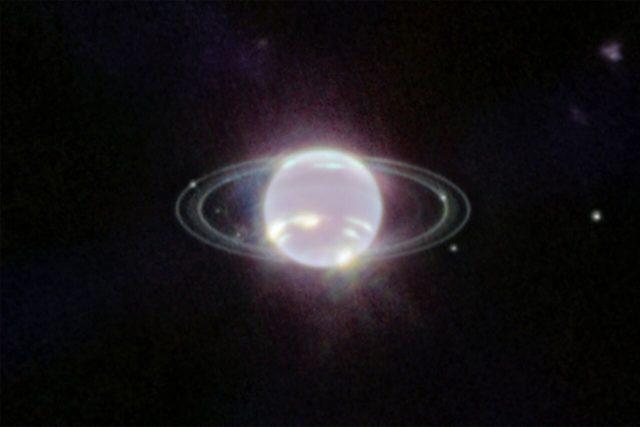The number of photos taken with the James Webb Space Telescope, developed in collaboration with NASA, ESA and CSA, and launched last December, is on the rise. This time JWST focused on Neptune.
FOR THE FIRST TIME THE NEW FACE OF THE GIANT ICE EVENT
The James Webb Telescope has released the sharpest images taken in over 30 years of Neptune, the last planet in the Solar System. The telescope showed a new face of the frozen giant at the edge of the Solar System, 4.3 billion kilometers from Earth.

According to the bulletin shared by the European Space Agency; This time, the James Webb Space Telescope has captured Neptune, the planet farthest from the Sun, in its target.

Neptune’s rings revealed in unprecedented detail.

The object seen brightly above; Neptune’s most unusual moon is Triton, which is completely covered in frozen nitrogen. This satellite looked so bright because it reflects 70% of the sunlight.

“WHY IS IT NOT BLUE NEPTUNE?”
The European Space Agency explains why the planet does not appear blue: “Webb’s NIRCam (Near Infrared Camera) captures objects in the near infrared range of 0.6 to 5 microns, so Neptune does not appear blue to Webb.” explained in his words.

 Officially announced! You will give a share of 45%, you will be able to earn money–
Officially announced! You will give a share of 45%, you will be able to earn money–
 Last Minute: It came out after I didn’t go to work for a few days! The executive director stole 13 million lire and fled abroad.–
Last Minute: It came out after I didn’t go to work for a few days! The executive director stole 13 million lire and fled abroad.–
–
–


